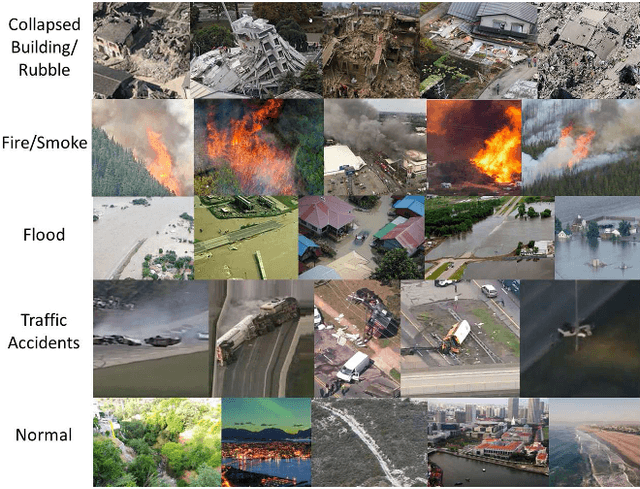EmergencyNet: Efficient Aerial Image Classification for Drone-Based Emergency Monitoring Using Atrous Convolutional Feature Fusion
Paper and Code
Apr 28, 2021



Deep learning-based algorithms can provide state-of-the-art accuracy for remote sensing technologies such as unmanned aerial vehicles (UAVs)/drones, potentially enhancing their remote sensing capabilities for many emergency response and disaster management applications. In particular, UAVs equipped with camera sensors can operating in remote and difficult to access disaster-stricken areas, analyze the image and alert in the presence of various calamities such as collapsed buildings, flood, or fire in order to faster mitigate their effects on the environment and on human population. However, the integration of deep learning introduces heavy computational requirements, preventing the deployment of such deep neural networks in many scenarios that impose low-latency constraints on inference, in order to make mission-critical decisions in real time. To this end, this article focuses on the efficient aerial image classification from on-board a UAV for emergency response/monitoring applications. Specifically, a dedicated Aerial Image Database for Emergency Response applications is introduced and a comparative analysis of existing approaches is performed. Through this analysis a lightweight convolutional neural network architecture is proposed, referred to as EmergencyNet, based on atrous convolutions to process multiresolution features and capable of running efficiently on low-power embedded platforms achieving upto 20x higher performance compared to existing models with minimal memory requirements with less than 1% accuracy drop compared to state-of-the-art models.
 Add to Chrome
Add to Chrome Add to Firefox
Add to Firefox Add to Edge
Add to Edge